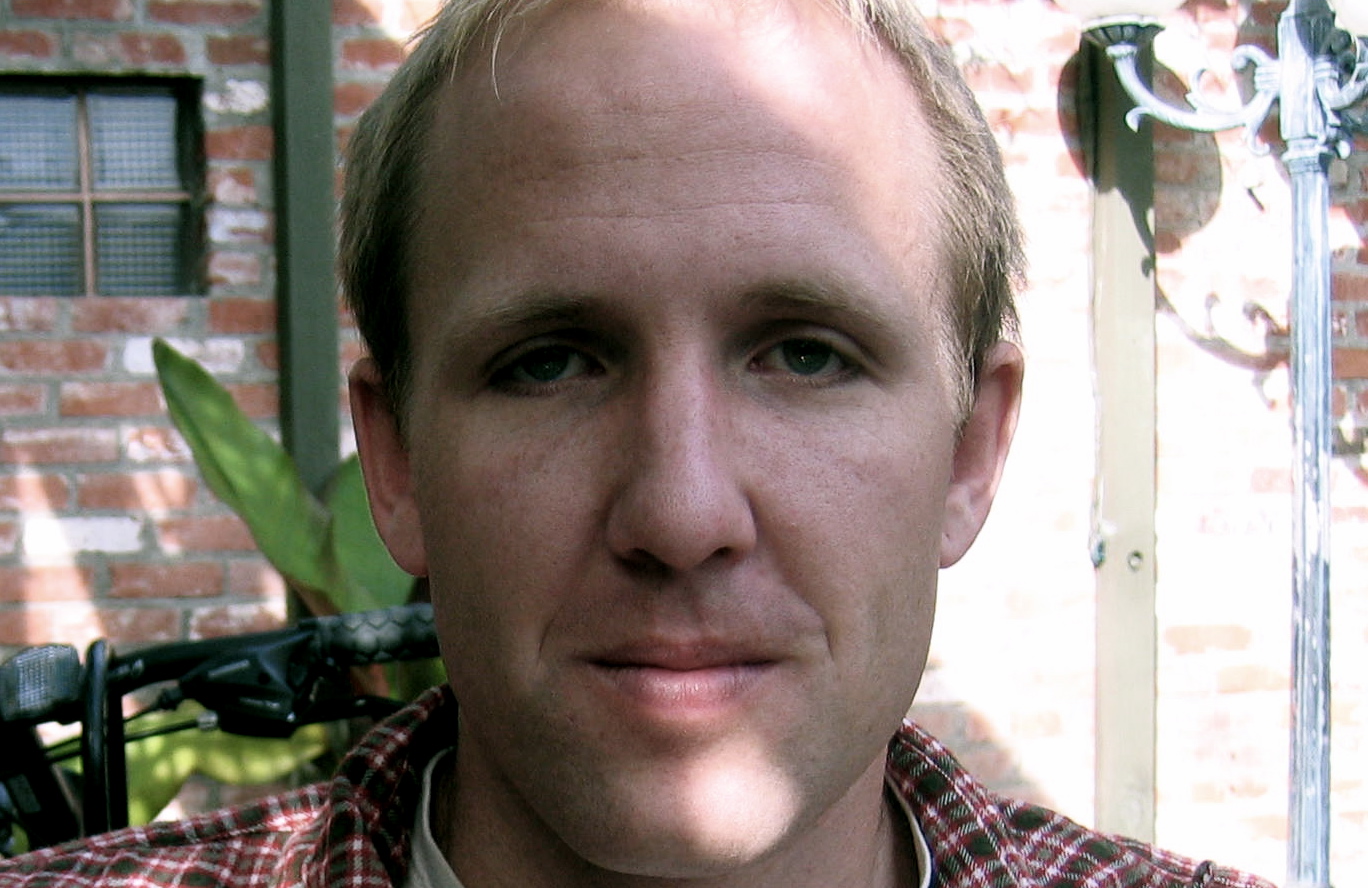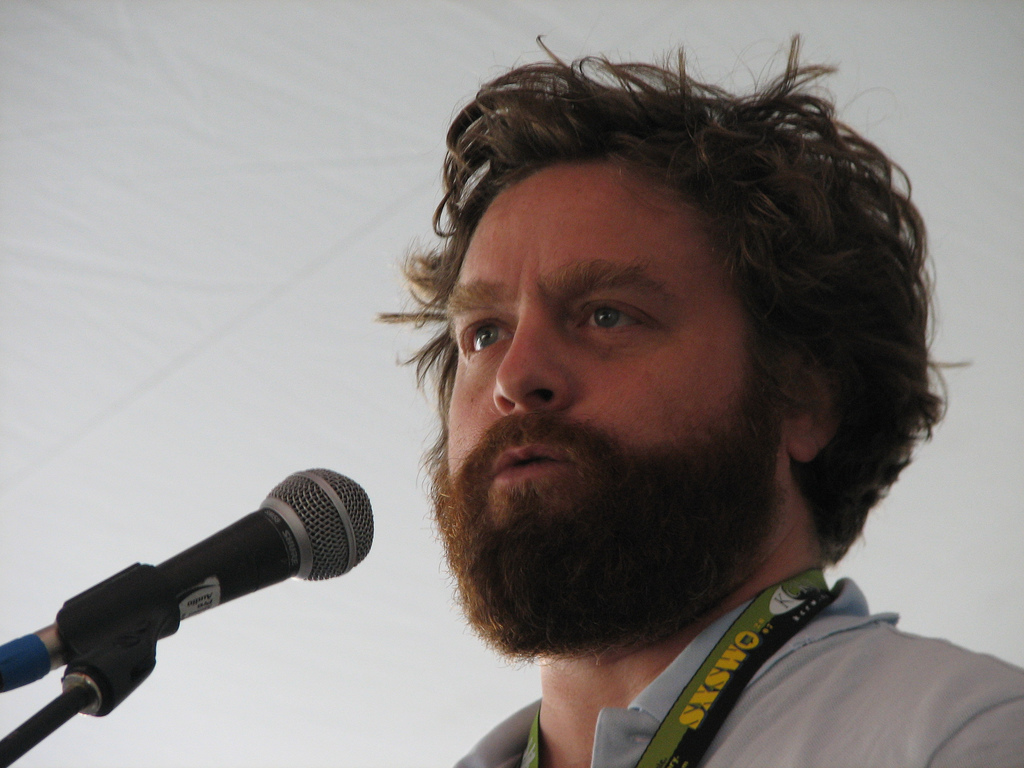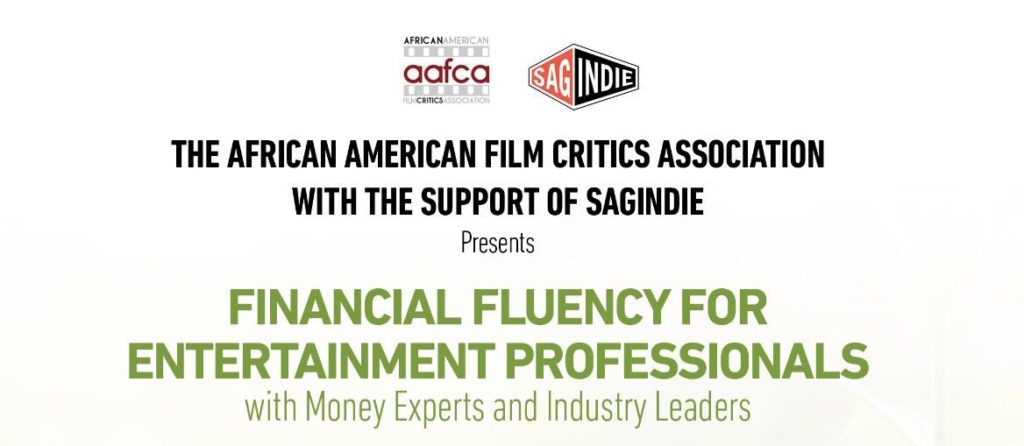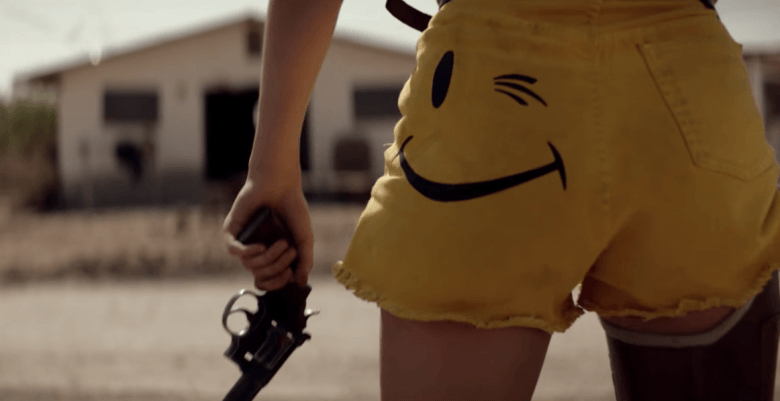 Any indie filmmaker will tell you that getting your first feature made is one of the most painstaking, emotional challenges that you face in an early career. Shopping scripts around to countless agencies, producers, and friends of friends more often than not leads to exhausting dead ends. This can be an extremely tiring process that leaves most with no confidence in their project or themselves.
Any indie filmmaker will tell you that getting your first feature made is one of the most painstaking, emotional challenges that you face in an early career. Shopping scripts around to countless agencies, producers, and friends of friends more often than not leads to exhausting dead ends. This can be an extremely tiring process that leaves most with no confidence in their project or themselves.
This was not the case for brothers JARED and BRANDON DRAKE who, upon graduating film school, were determined to make a feature film no matter what. From a pile of ideas they decided on a story called VISIONEERS, a dark comedy set in a fantastical society where citizens are known to spontaneously combust from stress. After only two drafts, the brothers set a shooting date for the fall of ’06 and used that as a tool to convince others, such as producer Jory Weitz (Napoleon Dynamite), to join their cause.
Set in and around the gorgeous landscape (and the Drakes’ home town) of Seattle, Washington, Jared and Brandon utilized every local asset they could muster from crew to locations to even a pole vaulting pit in the backyard at their parents’ home. Had they not put together such an excellent team and cast (including Zach Galifianakis, Judy Greer, Missi Pyle, D.W. Moffett and James LeGros), the brothers still would have gone through with production – even if it meant shooting on mini-dv and with a budget of $20,000.
In early December of 2008, on the tail end of an amazing festival run, I sat down with the director of the Visioneers, Jared Drake, at the 18th Street Coffee House in Santa Monica to discuss everything from UCLA pole vaulting to rehearsing with Zach Galifianakis in North Carolina.
The film has recently acquired distribution through B-Side Entertainment and is out on DVD now. [UPDATE: Visioneers is now streaming on Amazon Prime, Hoopla, Vudu, and Tubi.]
—
WILL PRESCOTT: Okay, let’s start easy. Tell me a little bit about your background.
JARED DRAKE: I graduated from high school in 1999 in Snoqualmie, Washington and came down to UCLA to run track. I actually got recruited by the track team. That’s where the whole pole vaulting thing comes from in the film (laughs).
WP: Yeah, the pole vaulting was an interesting touch and was going to be one of my questions. So you didn’t go to college with filmmaking in mind?
JD: My ticket out of Snoqualmie was pretty much, you know, track. My freshman year I had really gotten into photography. My track coach was actually a big surfer and he had been filming and editing surf videos for a long time. He saw some of my photography and he suggested that maybe I get into this Final Cut thing and start editing videos for him. After doing work for him for about a year, I got my own camera and started shooting and editing my own stuff. Then applied to the film program at UCLA and got in. I graduated in ’04 with an undergrad in film.
WP: And your brother?
JD: During that time Brandon was writing a lot of short stories, traveling, doing stuff on his own. I told him that he should start thinking about scripts. I never expected to actually turn film into a career, you know? I really kind of fell into it. As soon as I got to UCLA I was like, “oh, this is something legitimate that I can actually do it as a profession.” Brandon started writing screenplays and he applied to the professional program at UCLA and got in.
WP: Is he older or younger?
JD: Older.
WP: Did you guys collaborate on anything else before this?
JD: Not together. This was the first thing we fully collaborated on – Brandon and I. But he had screenplays he was writing and getting done – like, I think Visioneers was his ninth script.
WP: So, he had written a few drafts of the script before you got involved or was he pitching you ideas?
JD: We came together with all of our ideas – I think maybe I had four or five. He had come up with like 20 or 30 ideas of films we could shoot in Seattle. Once we narrowed it down to Visioneers Brandon went back and wrote the first draft. I think we really only did two drafts of it before we went out and locked it.
WP: How many pages was that?
JD: It was about 112. We never changed it until we got into production and we had to start shifting scenes for practical reasons. That’s another crazy lesson in all of this – by setting our own terms and saying we’re shooting here, we’re shooting regardless of what happens, even if we have to do it on digital camera, we had COMPLETE creative control over the material. So anyone that got involved, they could give comments, but we never had to change anything unless we wanted to. So the script that Brandon finished is actually what we shot.
WP: And then you decided to just do it?
JD: We developed the script around locations that we could use in Snoqualmie with the intent of – come hell or high water – shooting the film in the fall of ’06. We had about $20K initially and we were going to shoot it with my camera and actors we had access to. By going out and saying that we’re a production company with a film that we’re shooting in September, people, you know, saw us as a credible entity. And, of course, everyone responded to the material. Which, bottom line, is what backed everything up. It’s what enabled us to get it to Zach (Galifianakis) and Jory (Weitz). As soon as Jory got involved it went to the next level because he had been on Napolean Dynamite and some other films.
WP: How did you get it to Jory?
JD: It was just a friend of a friend. I have a buddy that’s a big golfer and I go out golfing with him every now and then. He knew a guy who read the script and passed it onto Jory. It really just started off with people we knew. I think that was the most difficult thing getting started — really opening your eyes, and seeing the resources you actually do have. You know, a lot of filmmakers that want to get going are like, “well I don’t know anyone, I don’t know anyone.” Just open your eyes, look to the people right around you. Ask for help. Chances are, someone will be able to help you out.
WP: What kind of budget did you end up with?
JD: It was under a million. That’s all I can say.
WP: That’s fine. What was your shooting schedule?
JD: We had 18 days of principle photography and 4 days of second unit for all of the stuff that appears on TV. So, we had 22 days. The script was 112 pages, but a lot of that was TV stuff. The difficulty with the TV is that, in a way, you have to shoot it twice, or count those pages twice. Because you have to shoot the person watching the TV and you also have to shoot the TV material.
WP: Where did the crew come from?
JD: Our key department heads, like our cinematographer, production designer, make-up, even the sound guy all came from down here (Los Angeles). We flew them up and housed them in Seattle. The rest of the crew came from Seattle.
WP: How did your cinematographer, Dino Parks, get involved? Did you pick him? Had you worked with him before?
JD: I hadn’t worked with him before. Jory came on board and all of the sudden agencies were sending us DP (director of photography) reels. I watched probably 100 reels and met with about twenty to thirty of them. And Dino, he’s so experienced. How his career hasn’t broken out yet really boggles me. I mean, he’s been on everything. Shot so much stuff. He’s so knowledgeable. He came into our first meeting and we just talked about the story.
WP: Wow. That’s great.
JD: For two hours! We didn’t even talk about the visual look of it. I walked away so stoked. He saved our ass so many times. Just having been through it and his experience.
WP: So, how did you guys start talking about visual style? What kind of influences did you pull from? Did you look at a bunch of different films?
JD: The biggest question throughout every phase of it was how do we balance this absurd world with trying to set it in our world today. The last thing we wanted to do was make this a crazy Brazil, Schizopolis, or totally out of left field absurd movie. We wanted to try and keep it in our world as much as we could, while still staying true to these certain absurd elements that were in the story. A film we studied a lot was Being John Malkovich. Which is a totally different story, different tone, but it’s the same kind of thing. There’s this absurd element that’s introduced within the film, how does he incorporate that into our world today? Where do you need to tip your hat to the audience? How do you balance that?
WP: That makes sense.
JD: So, what if we have one world that’s much more organic, like the “undeveloped area“ and another world that much more oppressive and declining, like the Jeffers Corporation? And what if these two worlds are fighting throughout? It’s almost good vs. evil. One’s very warm, organic, hand held, and longer lenses. The other one is very structured, rigid, locked off camera, sharp angles, and very cold. While the main character is spiraling to his ultimate low, the “evil” world begins to take over the “good” world. So that’s basically where our visual approach came from.
WP: There are many absurd elements to the story and you guys did a really good job keeping it grounded in a real world. That said, will you discuss where in the hell this idea came from?
JD: [Laughs] What excited us about it was it’s this story about a guy who’s trying to chase his dream in a world that doesn’t support that. You know, kind of like what we were trying to do at the time (as aspiring filmmakers). We’re trying to figure out a way to make films in a world where you need to make a living and make things happen. How can you pursue your dream? It gets really tough. The initial idea for Visioneers is just that. That’s what we were excited about. That’s what we talked about. That’s what we wanted to project on screen. Brandon talks about his experiences working at insurance companies and other terrible jobs he’s had. It was a way for him to exaggerate all of that.
WP: This might be more of a question for Brandon, but were there any influences outside of film that inspired this story?
JD: I really don’t know. I’m sure there are. We’re not consciously aware of them. We never said, “let’s try to pull elements from this.” One of the hardest questions we get, and I still have a tough time trying to answer it is, what would you compare this film to? I really have no clue how to answer that.
WP: Well, Being John Malkovich is a pretty good one, I would say.
JD: Yeah. Being John Malkovich. Charlie Kaufman is a major influence on us. The Coen brothers are a major influence on us, although I don’t think there’s much of that in there. Kurt Vonnegut, Paddy Chayefsky, those are some of Brandon’s favorite writers and I think there’s some of that in the story. The kind of filmmakers I admire aren’t those who are like, “this is the type of movie I do and that’s it”, but they’re the guys who say this is the type of movie I want to do now. Or this is what I want to work on now. Like (Steven) Soderbergh, I love that he goes and does Ocean’s Eleven and then does something tiny like Bubble. That’s really the career that my brother and I want to have. People are like, “what’s your next film going to be like? Is it going to be like the Visioneers?” Well actually it’s going to be a lot different.
WP: What is it?
JD: [Laughs] I can’t tell you. Brandon would kill me.
WP: Okay, fine. But you are working on something?
JD: Yeah, yeah. That question though, it’s such a tough question like, “who are you going to fall in love with next?” We don’t know where we’re going to be next year. There’s probably always going to be a comic thread in our work, but we don’t know what types of movies we’re going to make. As we evolve, our movies will evolve into something new and different.
WP: Did you ever find difficulty, as a first time director, convincing people that you could handle it or were up for the challenge?
JD: I think everyone is always a little skeptical of a first time director. People say that as a director you need to show up to set on the first day and fire someone so they know you’re in charge. [laughs] But, I showed up and I was like, “guys this is my first one. I think I know what I’m doing, but I really don’t. You guys have more experience than I do. So, let’s just have fun and get through it. Try and make something great.” And I think the crew quickly warmed up with that, which was nice. I think if you’re just open and supportive and create a fun and comfortable work environment it goes a really long way for people. That was probably the best thing I did. More so than me going in and trying to prove that I know what I’m doing.

WP: Let’s talk about some of those people who were subjected to the environment you created. The cast. Zach Galifianakis. I love the guy. I’m actually a really big fan of his. But how did he get attached? Why him? I would say about 70% of the country has yet to really know who he is [side note: it should be mentioned that this interview was conducted long before the success of The Hangover].
JD: Jory (Weitz) is a casting director as well as a producer and we had maybe 30 people we were going out to at the start. People that we thought were sensible and also right for the part. Zach was always near the top of that list. We didn’t really know what he could do as an actor, which made everyone nervous, but he has this quality about him where you look at him and there’s so much going on behind the eyes. We were always keeping our fingers crossed that Zach would pull through. We sent the script to him and he never got back. It was like two months and he never got back to us.
WP: Oh no.
JD: So we were maybe a month away from shooting. Maybe less, and we didn’t have the main character yet. Jory finally called Zach’s agent and was like, “you need to have your client read this script and meet us if he’s into it.” So Zach read it that night and the following day we met. He loved the material. He was like, “Is this movie really getting made?” [laughs] That was his first question. And, “you guys really want ME to play George? Can I play George?” [laughs] I was like, “that’s the question I wanted to ask you!” We just had a really good conversation about the material. I ended up not even reading him or auditioning him at all.
WP: To me he seems like he’s either the kind of actor that’s really approachable, the guy you can go get a beer with, or he’s really introverted and standoffish. What was he like to work with?
JD: Zach is totally approachable. He is as down to earth and as normal of a dude you’ll ever find. The crazy guy he plays on stage with his comedy really is an act. There’s a piece of him that is that, obviously, but he’s so smart, so bright. Extremely articulate, down to earth and humble.
WP: Did you guys rehearse at all?
JD: We rehearsed. We had two meetings before we officially pulled the trigger on Zach. Then I rehearsed with him and Judy (Greer) independently and then one day with them together. Then the week before production I went out to Zach’s ranch in North Carolina and we rehearsed for two or three days. Just went through it all. So, I had some good time with Zach, but not much time with everyone else. I realized that I wasn’t going to have much time with my actors before we started shooting so I started to see if there was anything I could do to alleviate that strain. My cinematographer (Dino Parks) and I hashed everything out well before shooting, with the hope that when we got to set he’ll know exactly where to go, exactly what to do and I can spend that time with the actors.
WP: Judy Greer, Missy Pile, D.W. Moffett– you got a lot of smaller names, but still very accomplished actors. When did they all get involved?
JD: It was a major issue as we were casting (not having a lead) because everything trickles off of the main character. I think Judy, Mia, James LeGross, D.W. Moffit, they all came in pretty much at the same time. And that was right about the time we were saying Zach has to be our guy, even though we hadn’t met Zach yet. Missy came in one of the last, I think.
WP: This will make more sense to the people back in the Northwest, but I spotted some Almost Live cast in there. Pat Cashman, John Kesiter, etc. Was that just a local casting strategy or did you specifically want to work with those actors?
JD: [Laughs] I grew up watching Almost Live, but we didn’t have them in mind as we were developing the material. Jory actually opened our eyes to that. He was like, “is there anyone in the Northwest that are local celebrities that you think we could fill in for some of these roles?” We were like, “Almost Live guys!” So we went out to them as we were going into production. Those guys were great. That was a dream come true. I was more star struck by any of them then anyone else in our film. I mean John Keister, man? The High-fiving White Guys?
WP: Wow. Were there a lot of moments during shooting where it hit you that you were actually doing it? Making a legit feature film?
JD: To be honest, the most surreal moment was the last day of shooting when I was driving to set. I literally broke down in the car and was like “oh, man, we did it!” And until that moment, I didn’t really think we were going to ever make the film.
WP: Do you ever pinch yourself on how everything has transpired for you?
JD: Yeah, yeah. A little bit. It’s actually kind of an emotional roller coaster right now, because with Visioneers, we had a tough time getting it out there. We ended up submitting to Sundance the following year (2007) and got shot down. Then we said “let’s take it back to Seattle and premier in our home town.” We’ve had a lot of good success with the festival circuit, a lot of great reviews. I went to Austin were we had a screening that was probably about 1,000 people. A huge screening. The following day I spoke on a panel in front of 60 filmmakers asking me questions about how you make a movie. And all of the sudden I’m feeling really good. I’m like “I made it!” And then I come home to LA and I’ve got $60 to live off of the rest of the month. I mean, I was cool four hours ago in Austin! The tough thing is financially getting by. It’s so great to actually have a movie and be able to show it to people and get them to respond. I don’t want to take anything away from that. But just the realistic mindset about where your career is at. My brother and I realized that even though we made a film and people liked it, we’re still in the exact same spot we were when we started this process four years ago. Which is, we have a script we want to make, we don’t know where the money is going to come from, we don’t know how we’re going to do it, but we are going to do it. So, we haven’t really pinched ourselves just yet. Maybe when I get paid I’ll pinch myself. But until then…
WP: You could always go back to pole vaulting.
JD: [Laughs] That’s right. Maybe I could. There’s a ton of money in pole vaulting!

For more information on VISIONEERS, check out the Facebook Fan Page. If you’re an independent filmmaker or know of an independent filmmaker we should interview, email blogadmin@sagindie.org for consideration.


